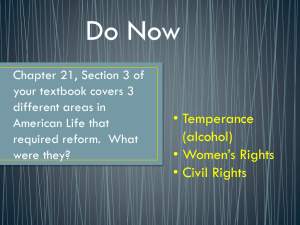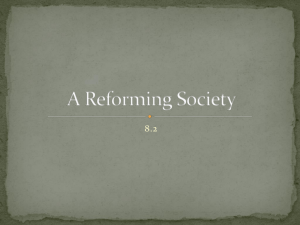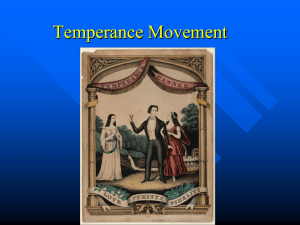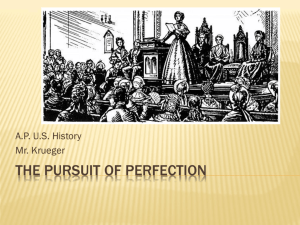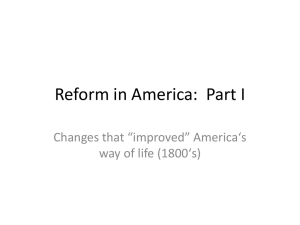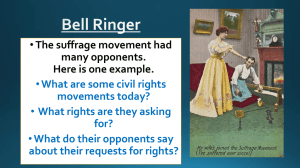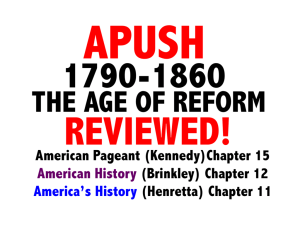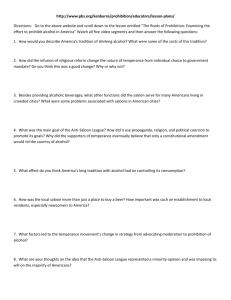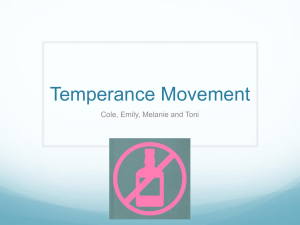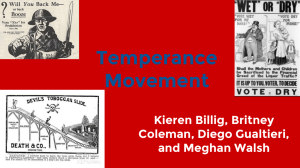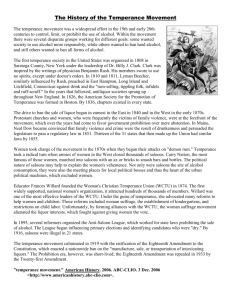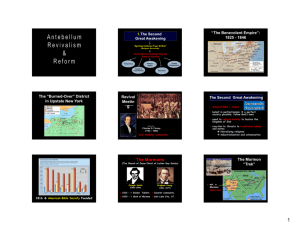Temperance
advertisement
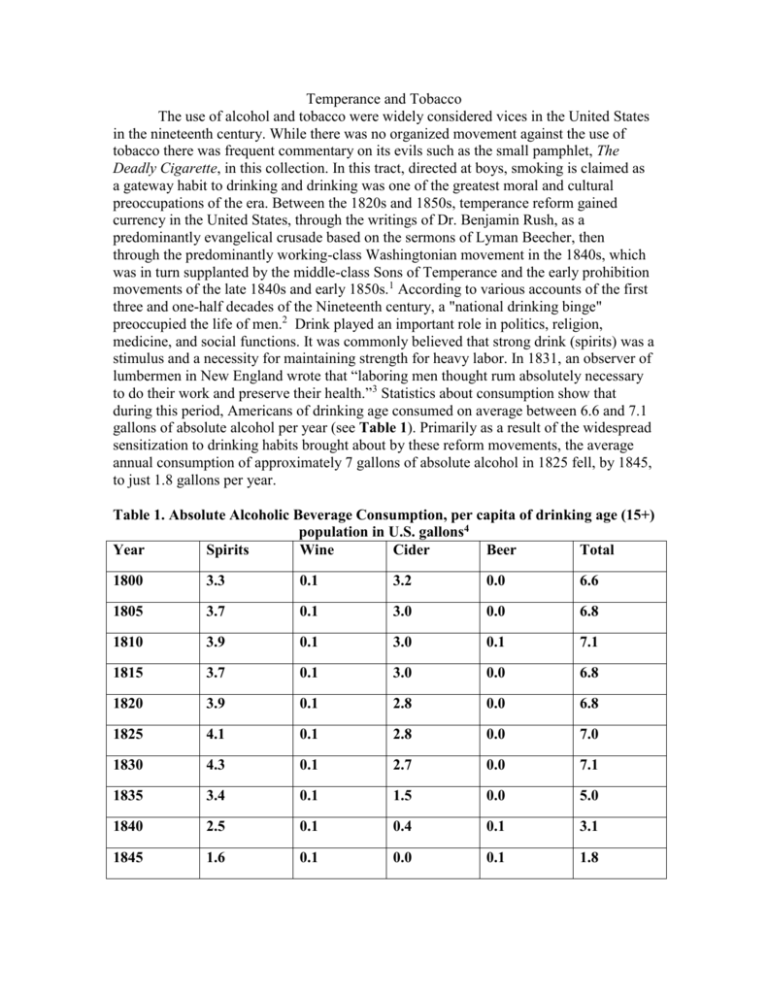
Temperance and Tobacco The use of alcohol and tobacco were widely considered vices in the United States in the nineteenth century. While there was no organized movement against the use of tobacco there was frequent commentary on its evils such as the small pamphlet, The Deadly Cigarette, in this collection. In this tract, directed at boys, smoking is claimed as a gateway habit to drinking and drinking was one of the greatest moral and cultural preoccupations of the era. Between the 1820s and 1850s, temperance reform gained currency in the United States, through the writings of Dr. Benjamin Rush, as a predominantly evangelical crusade based on the sermons of Lyman Beecher, then through the predominantly working-class Washingtonian movement in the 1840s, which was in turn supplanted by the middle-class Sons of Temperance and the early prohibition movements of the late 1840s and early 1850s.1 According to various accounts of the first three and one-half decades of the Nineteenth century, a "national drinking binge" preoccupied the life of men.2 Drink played an important role in politics, religion, medicine, and social functions. It was commonly believed that strong drink (spirits) was a stimulus and a necessity for maintaining strength for heavy labor. In 1831, an observer of lumbermen in New England wrote that “laboring men thought rum absolutely necessary to do their work and preserve their health.”3 Statistics about consumption show that during this period, Americans of drinking age consumed on average between 6.6 and 7.1 gallons of absolute alcohol per year (see Table 1). Primarily as a result of the widespread sensitization to drinking habits brought about by these reform movements, the average annual consumption of approximately 7 gallons of absolute alcohol in 1825 fell, by 1845, to just 1.8 gallons per year. Table 1. Absolute Alcoholic Beverage Consumption, per capita of drinking age (15+) population in U.S. gallons4 Year Spirits Wine Cider Beer Total 1800 3.3 0.1 3.2 0.0 6.6 1805 3.7 0.1 3.0 0.0 6.8 1810 3.9 0.1 3.0 0.1 7.1 1815 3.7 0.1 3.0 0.0 6.8 1820 3.9 0.1 2.8 0.0 6.8 1825 4.1 0.1 2.8 0.0 7.0 1830 4.3 0.1 2.7 0.0 7.1 1835 3.4 0.1 1.5 0.0 5.0 1840 2.5 0.1 0.4 0.1 3.1 1845 1.6 0.1 0.0 0.1 1.8 1850 1.6 0.1 0.0 0.1 1.8 Early temperance reformers advocated moderation and avoidance of “ardent spirits” (hard liquor), but by the 1830s, temperance reformers began to call with increasing frequency and strength for pledges of total abstinence. There was a natural overlap between evangelical religious movements of the period and temperance reform and the works in this collection such as Mary Fox’s The Ruined Deacon neatly reflects this overlap. In calling for total abstinence or teetotaling, temperance reformers expressed their belief that moral reform and social reform were linked and that a transformation of society could take place through the eradication of drink. As Ian Tyrell has suggested, both evangelical and temperance movements were a response to rapid socio-economic changes brought on by the industrial revolution in the Jacksonian era.5 1 David Reynolds, Walt Whitman's America: A Cultural Biography (New York: Alfred A. Knopf, 1995): 92; Sean Wilentz, Chants Democratic: New York City and the Rise of the American Working Class 1788-1850 (New York: Oxford UP, 1984): 306-314. 2 Jack H. Mendelson, Jack and Nancy K. Mello, Alcohol: Use and Abuse in America (Boston: Little, Brown and Co., 1985); W. J. Rorabaugh, The Alcoholic Republic: An American Tradition (New York: Oxford UP, 1979. Ian Tyrell, Sobering Up: From Temperance to Prohibition in Antebellum America, 1800-1860 (Wesport, CT: Greenwood Press, 1979). 3 Journal of Humanity, 17 January 1831. 4 Data taken from W.J. Rorabaugh, “Estimated U.S. alcoholic Beverage Consumption, 1790-1860,” Journal of Studies on Alcohol, 37 (1976): 360-61. 5 Tyrell: 110.
